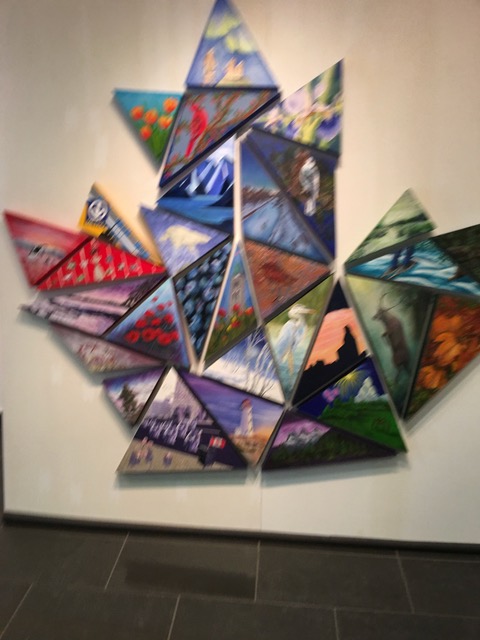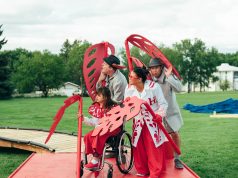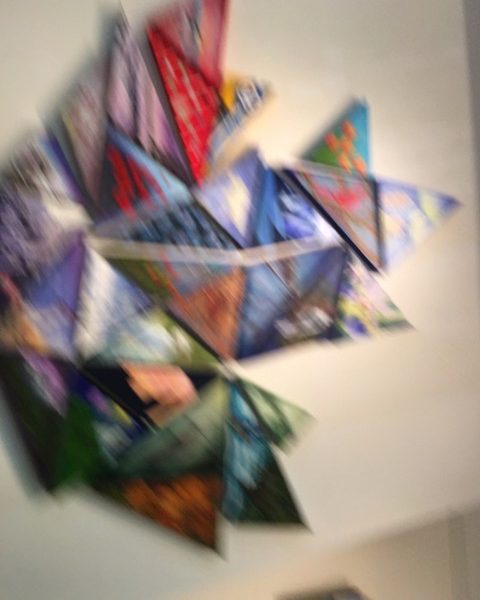
A man with Cerebral Palsy flies to a foreign country to be part of an inclusion conference. There’s a joke there somewhere, and it was on me.
You see, my entire life I’ve been fighting for disabled folks like me. I think we should be found everywhere – the existence of people with visible physical disabilities should be undeniable. To quote the disability rallying cry, “Nothing about us without us!” That’s the story of me I tell to myself. That’s the person I like to think I am. So, as someone invited to the Republic of Inclusion, the end of a cycle about Deaf, Disabled, and Mad Arts, I should be home, right? These are my peeps.
So why am I standing with my hand on the doorknob of the Shenkman Arts Centre, freaking out? Why do I want to run away? As I began to analyze my reaction I realized two things: 1. The person we say we are, the person we want to be, and the person we actually are are often three different people. 2. I had been programmed by years of societal conditioning to avoid other disabled people.
Here’s the big disability secret: If you can pass for non-disabled, you do it. If you can find others who can pass, they become your community. If you see folks who cannot possibly pass in the mainstream culture, you run like hell in the other direction, for fear of being found out by association. This idea is so inculcated in my being, so fundamental to my existence, that is hard to realize, much less speak about. It is, to quote David Foster Wallace in This Is Water, my default setting.
I was busy deconstructing my experience in real time because Laurel Green of SpiderWebShow (a group I’ve admired for a while) asked me to write this article. I was at The Republic of Inclusion because Sarah Garton Stanley had invited me almost a year earlier. When Sarah first mentioned it to me I didn’t give it much thought, as it felt a bit like “we should have coffee sometime” – one of those well-meaning things people say that have no chance of ever coming true.
One day, while feeling sorry for myself, I decided to drop Sarah an email to see if any of this was real – and, lo and behold, it was! I was absolutely thrilled and couldn’t wait to get there, until I was actually on my way. I was so actively avoiding what I was about to do that while waiting to pass through customs at Pearson Airport in Toronto I helped not one, not two, but three foreign grandmothers who were being held for questioning connect with their worried grandchildren.
As I got closer to Ottawa, my brain started making “do not engage” flashcards and shoving them in front of my eyes.
FLASH: You are middle-class. What if they aren’t, and you say something offensive? DO NOT ENGAGE!
FLASH: You are horribly over-educated. What if you seem pretentious? DO NOT ENGAGE!
FLASH: You are American and they are Canadian. In this Age of Trump, you can’t be too careful. DO NOT ENGAGE!
FLASH: They have been together for 10 days and you are only coming in for the last three. What if you act too chummy? DO NOT ENGAGE!
As the coup de grace, the arrogant part of the brain piped up with FLASH: You are a journalist (as if I’d just been hired by the Citizen, or the Globe and Mail) and cannot risk losing your objectivity. DO NOT ENGAGE!
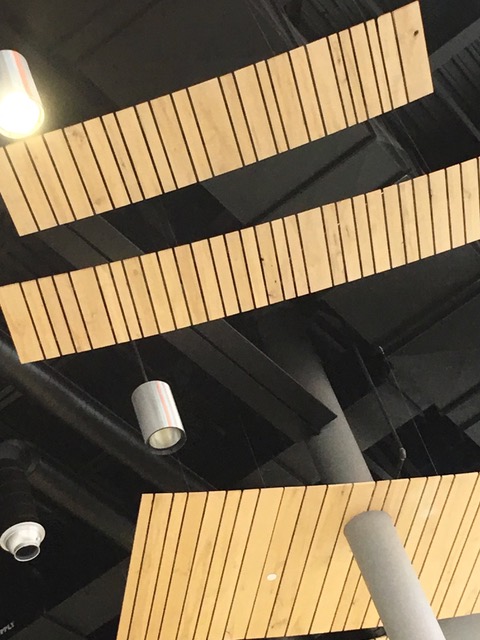
When I finally walked in the room, what I saw was truly remarkable. There were folks of all ages, sizes, shapes, and skin colours. Folks in wheelchairs, some with attendants and some not. There were ambulatory folks was with prostheses, folks with low vision and/or hearing, and even an artist with Tourette’s syndrome. The vast majority of these artists were in deep and passionate conversations with each other. Now, I’ve hung out in some freaky scenes, and this was the equal of any of them.
In the whack-a-mole that is my brain, the fear of inferiority suddenly popped up. These folks looked pretty serious. Could I hang? Was I good enough? Was my existence at this the event the exact moment that Canada became cooler than the USA? You already have poutine and Justin Trudeau – was I the American third strike? My brain was now running down possible scenarios that would allow me to feel better about myself. As I looked around I saw a subset of better-dressed folks. Officials, perhaps? Management? Funders? New plan: I’ll worry about the article later. Now I’ll network. I’m good at networking. I can do this. Goal: Pass out as many fancy business cards as possible. Stretch goal: Return to the US with a job. Go!
After schmoozing for a bit, I looked up to see a performance starting. The brain was split on this new development – half of it wanted the piece to be brilliant so I could say I’d spent time with genius artists, while the other half wanted it to be awful so I could feel better about myself. It was Erin Ball, and she was fantastic.
Erin is a circus artist who lost both of her feet while on a walk at night. Her feet got wet early in the walk, she sat down for a while, and when she tried to get up, she couldn’t feel them. Erin fell unconscious and 6 days later she was found. Ms. Ball gave an aerial silk performance on two 10-meter-high silks. Her act was literally breathtaking, as she removed both prosthetic feet while 5 meters in the air, and did the second half of her routine footless. Seeing experimental performance, the type of work I began my career with, I relaxed. Of course, the work was good and thoughtful. Canadian artists take their time to develop these things. After all, this is a country that venerates curling, said the brain.
That night there was a party at the “Inclusion Lounge.” It was one of the first things I noticed on the schedule, and I was dreading it. The image in my head I couldn’t shake was one of apple juice, graham crackers, and Anne Murray on the stereo. I have rarely been so wrong. These folks knew how to throw down. Not only was there a DJ / mixmaster working in the turntables, not only was the music so loud you could barely hear yourself think (just like in any good club) but there was an impressive array of snacks and drinks.
The next day was devoted primarily to panels, which allowed Mr. Thinky Judgypants to once again come to the fore. Was the subject matter interesting? Were the panelists well-spoken? Was the discourse as nuanced and high-level as that my fancy graduate school? The answers, respectively, were often, usually, and sometimes.
Afterwards, there was another party, even more Dionysian than the night before. However, I went home to my hotel room feeling more alone than ever. Now I was with a very cool group of artists who I barely knew and wasn’t going to get to know, as the next day was our last together. If I had blown my chance to be part of the group, at the very least I needed to fully arrive before I had to leave, and I had no clue how that would manifest itself.
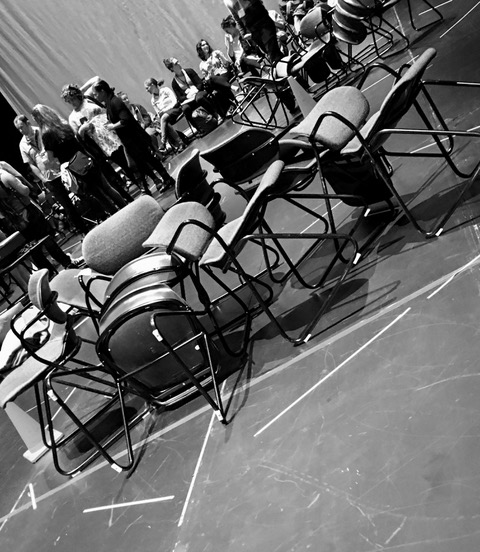
That final morning had been presented as a chance to give feedback regarding one’s experience of the panels, and the overall event. It wasn’t. Instead, we were given the chance to revision the room, to find our own way to be most comfortable in that space. There were many objects one could use to attempt this task, but my eye immediately settled on a large sheepskin. After I acquired it and placed it in the section of the room that felt best to me, a man who I had never seen before and whose name I never learned, asked if he could share my sheepskin.
Once we both laid down, and without my requesting it yet with my grudging permission, he began the most extraordinary guided meditation, asking me not only what I saw and encouraging me to examine what I saw more closely but, as importantly, asking me what it meant. Something profound inside of me shattered. For the first time in 40 years, I felt free. Free from my own expectations for myself. Free from the expectations of others. Able to be at peace with who I was in that moment. After three days of emotional journeying, I had finally arrived. I was home now and I instinctively knew I would carry that home everywhere I went.
